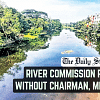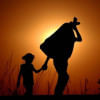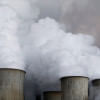Measuring the global goal on climate change adaptation

In the Paris Agreement on climate change, which was agreed on in December 2015 at the 21st Conference of Parties (COP21) of the United Nations Framework Convention on Climate Change (UNFCCC), all countries agreed to take actions to tackle climate change through both mitigation (to reduce emissions of greenhouse gases) and adaptation (to cope with the adverse impacts).
Through Article 7 of the Paris Agreement, the countries also agreed to a global goal on adaptation similar to the global goal for limiting temperature rise to below 1.5 Degrees Centigrade for mitigation. However, unlike the mitigation goal, there is no agreement on what the adaptation goal should be, as it is much more difficult to set such a global goal when adaptation is so location-specific.
As we are approaching COP24 in December in Katowice, Poland, where the Rule Book for measuring all the elements of the Paris Agreement will be adopted, we will need to agree on what should be the global goal on adaptation and the criteria of measuring it.
The adaptation research community around the world is actively trying to provide advice on how to set a global goal and then how to measure progress towards that goal. So what does the research community in Bangladesh have to say in this global debate on measuring adaptation?
The first thing to note is that we do not separate adaptation to climate change from development. For us, the way forward is to integrate adaptation to climate change into development at national, sectoral and local levels. This presents a methodical challenge as we need to find indicators for evaluating integration rather than a stand-alone adaptation. Hence in this case, we are looking at how the adaptation goal of the Paris Agreement can be integrated with the Sustainable Development Goals (SDGs). As SDG 13 is on climate change, that is a good place to start; but adaptation is also relevant for many, if not all, other SDGs as well.
The second topic of interest in our approach is to focus particularly on the aspect of enhancing the adaptive capacity of people, from individuals to households to villages and towns to entire countries. Here what we are doing is trying to develop a scale of measuring progress in human adaptive capacity where the inputs are the provision of knowledge and the outcomes are changes in behaviour (which should become more resilient over time).
The third element, which follows from the second, is that we should invest in the education of girls and boys (with a greater focus on girls) going forward both as a country as well as globally. This investment is by far the most important one that we can make to enhance the resilience of Bangladesh, and indeed the world, in the face of climate change.
However, it requires a paradigm shift away from quantity to quality of education and skill building. We want our youth and children to become problem solvers and innovators and not just job seekers.
The fourth element is to look at making future investments in hard infrastructure—of which we will need a lot—more harmonious with nature (and not disruptive of nature which we have done too much of already). This will require a much greater focus on enhancing ecosystem-based adaptation going forward.
The fifth and final element of emphasis is to prioritise the most vulnerable countries and communities for much-needed support to assist their own efforts to adapt through community-based adaptation. This is also very true within countries, including Bangladesh where the vulnerable groups include women, children, ethnic minorities, the elderly, and the disabled.
An important element of this issue is to identify the communities located in the most vulnerable zones where their livelihoods may no longer be viable over time due to climate change. Supporting these potential communities to prepare for and then implement migration to other locations where possible, thus making migration into a second-order adaptation (where the first-order adaptation is helping people where they are located). If this is not done, then such people will be forced to migrate under distress and be part of the discussion on loss and damage rather than adaptation.
Bangladesh is making a significant contribution to the science of adaptation to climate change through our contribution to the discussion on measuring adaptation in the upcoming COP24 in December.
Saleemul Huq is Director, International Centre for Climate Change and Development, Independent University, Bangladesh.
Email: [email protected]

 For all latest news, follow The Daily Star's Google News channel.
For all latest news, follow The Daily Star's Google News channel. 








Comments